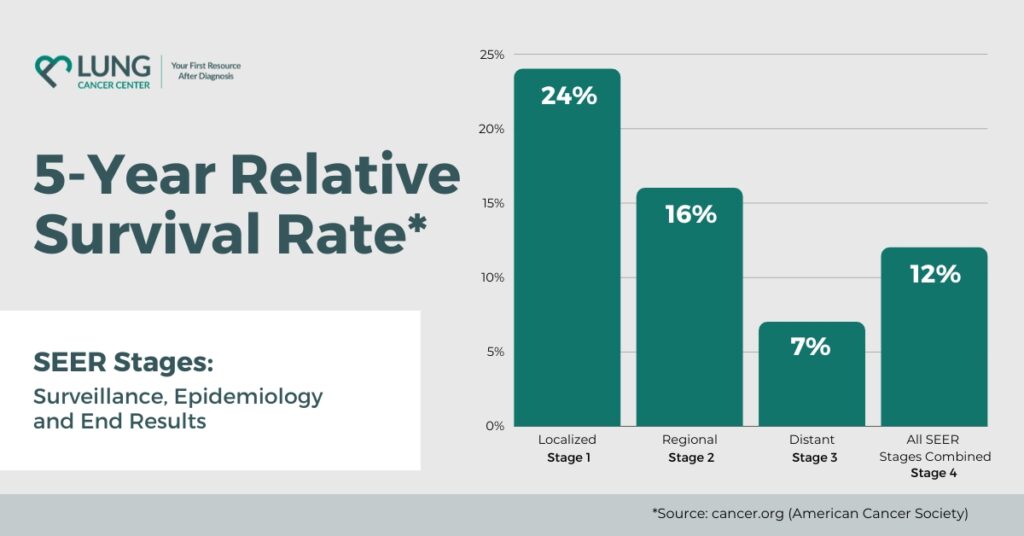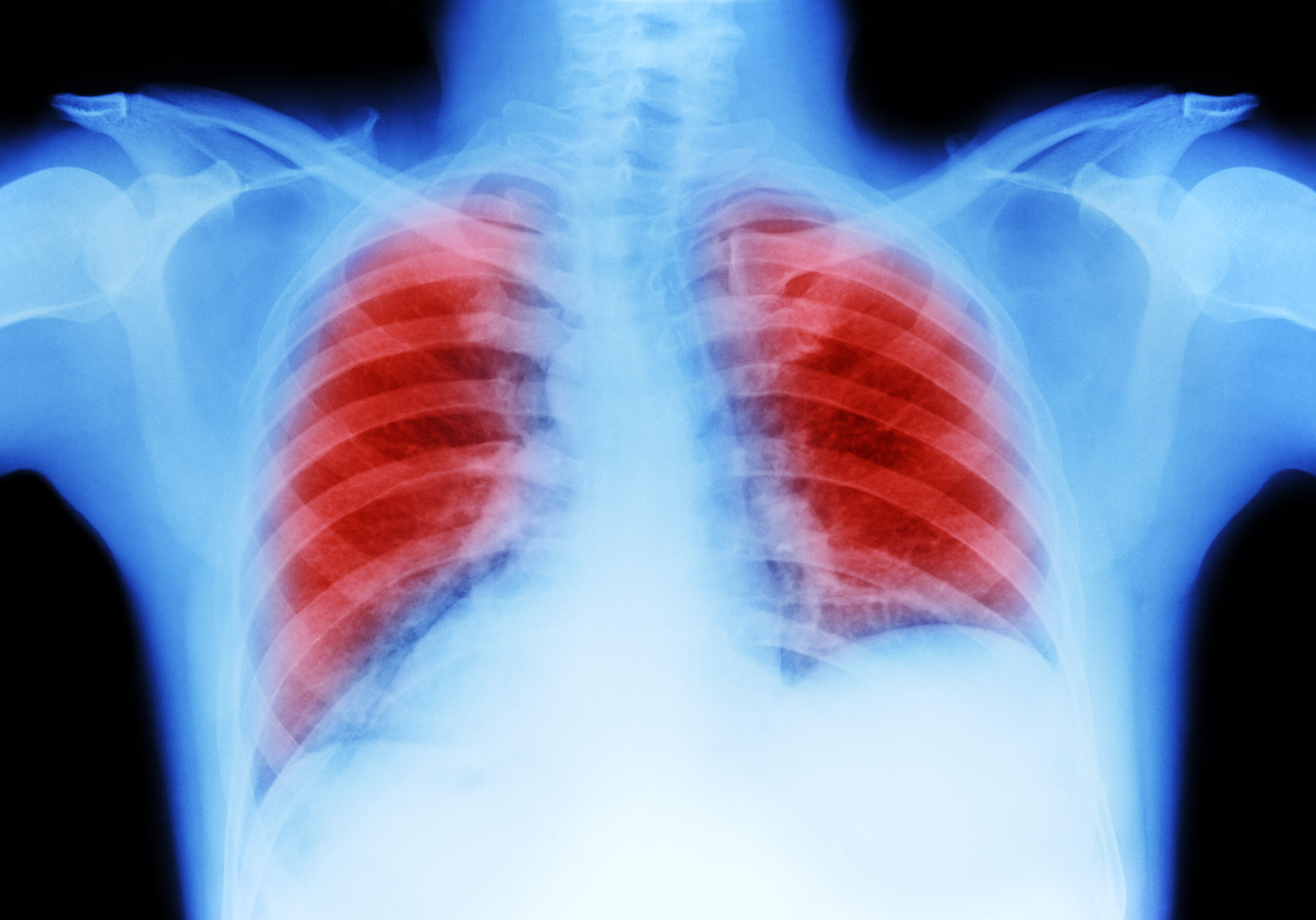Survival Rates for Mesothelioma
Mesothelioma is a rare and aggressive form of cancer which begins in the lungs, abdomen, heart, or testicles. Those who are diagnosed with this cancer, their survival rate over 5 years is 10 percent.

What are the Odds of Beating Mesothelioma?
Mesothelioma is a fast-acting and relatively hidden cancer which makes the odds of beating it difficult even more difficult. Cancer can oftentimes be harbored in a person for years without symptoms of disease, making treatment difficult as the tumor enlargens. The mesothelioma survival rates after diagnosis aren’t high as the disease becomes very difficult to deal with after it’s spread throughout the body. Some people have used a combination of treatments to extend their lives, but the odds are against them. A typical mesothelioma survival rate for people after initial diagnosis of mesothelioma is between 4-18 months.
There are multiple factors that can have an effect on those numbers, and they are not always accurate from person to person. The prognosis of mesothelioma isn’t good either, with only 10 percent of people surviving over 5 years. Things to consider when a doctor is determining your survival rate include age, gender, family genetics, general health, and location of the tumor. On this page, we will dive into each type of mesothelioma and the associated survival rates among them.
What Exactly Affects Mesothelioma Survival?
A lot of a person’s general characteristics determine their mesothelioma survival rate. It’s hard to say if any one of those identifying markers contributes more or less to extending your survival time. If there are two patients, both with stage 4 mesothelioma; one is a 75-year-old man with asthma, and the other is a 33-year-old woman with no underlying health issues; the chances of the woman outliving the man are high. In this case, the man’s lungs were not healthy before his diagnosis, and his breathing issues worsened after contracting mesothelioma.
Location of Mesothelioma Tumor
Mesothelioma and lung cancer can form in the lungs, abdomen, heart, and testicles. Tumors in the lungs and abdomen are the most common and therefore have the most information on treatment options and survival rates. Cancer that has invaded the heart is tricky to treat since you can’t remove the heart’s parts without it affecting the whole body. If the tumor is localized to one area, the treatment will help slow down the growth and give the patient a longer survival time.
Age, Gender, and Genetics of the Patient
Incident rates of mesothelioma are generally higher for white, Hispanic, or Latino males ages 75 or older. This can be due to where they were exposed to asbestos, such as their workplace. Mesothelioma researchers have speculated that women have a lower chance of getting diagnosed due to higher estrogen levels than men. Some families have a higher chance of getting mesothelioma because of a gene they have passed down through their family. A common gene seen in mesothelioma patients is BAP1. The job of the gene is to successfully suppress tumors. If it is not functioning correctly, the mutated BAP1 gene can speed up the process of cell division and tumor growth.
Mesothelioma Stage of Disease and Cell Type
There are four stages of mesothelioma cancer. Stage 1 is localized, and stage 4 is when tumors have metastasized or spread throughout the body. The later the stage and further the progression, the fewer options for treatment. Mesothelioma has four types of cancer cells, and depending on which one you have, your treatment and outcome can change. Epithelioid is the most common cell type and least aggressive leaving many treatment options on the table. Sarcomatoid can be rare and therefore has made it the most aggressive cell type to treat. Biphasic is a combination of epithelioid and sarcomatoid.
Doctors should be able to see which cell type has a higher count and then discuss and find a route of therapy. Dermoplastic is the least diagnosed of the cell types. The tumors from these cells commonly form in the abdomen and chest, making a telltale symptom of chest pain.
Healthy Living Habits and Genetics
The world of healthcare is consistently discussing healthy living habits and how to balance your life. If you have any stage of mesothelioma, doctors may tell you to focus on the aspects of healthy living you have control of. Exercising, eating a balanced diet, and not smoking are three ways to begin a healthy lifestyle.
You are at high risk of becoming sick if you’re predisposed to mutated genes or have a disease that is often occurring in your family. Genetics isn’t something a person can control, and being aware of the disease you are predisposed to develop may allow you to manage it better. Talk with your healthcare provider to learn more about genetic testing research.
Pleural Mesothelioma Survival Rates
Pleural mesothelioma is a form of cancer that begins in the pleural lining of the chest and lungs. Around 80 percent of all diagnoses are pleural. All forms of mesothelioma are related to asbestos exposure over a long period of time. Survival rates for pleural after one year of diagnosis are relatively high, but as the years go by, the rates drop significantly. Surgery is a great option for pleural if the cancer is local to one area and can be removed. Complimentary treatments like radiation and chemotherapy may be added to remove stray cancer cells and improve your survival rate. The 1-year, 3-year, and 5-year survival rates for pleural mesothelioma are:
| 1-year Survival | 73 percent |
| 3-year survival | 23 percent |
| 5-year survival | 12 percent |
Peritoneal Mesothelioma Survival Rates
Peritoneal is the second most common form of mesothelioma, which is found in the abdomen and the peritoneum membrane. This membrane assists in protecting the abdomen and internal organs from harm. Most people affected with this form are 50 years old or above, although cases in children can occur. To control painful symptoms, treating peritoneal mesothelioma can be done with surgery, chemotherapy, or palliative care. Surgery would try to remove cancer cells from the abdomen, but other treatments alongside it could be more impactful. The 1-year, 3-year, and 5-year survival rates for peritoneal mesothelioma are:
| 1-year Survival | 92 percent |
| 3-year survival | 74 percent |
| 5-year survival | 65 percent |
Pericardial Mesothelioma Survival Rates
Pericardial mesothelioma is one of the rarest forms of this cancer in the heart’s pericardium. The pericardium is the case that surrounds the heart and contains an extensive blood vessel network. The heart has an important role in the body to keep a person alive, and cancer invading that area can make it hard for a person to survive. Even worse, asbestos fibers, which are lodged in the heart, can be near impossible to remove with surgery without risking further damage. While rare, it’s still not impossible to beat, although utilizing everything at your disposal is the only true way to have a fighting chance. The 1-year and 5-year survival rates of pericardial mesothelioma are:
| 1-year Survival | 26 percent |
| 5-year survival | 9 percent |
Testicular Mesothelioma Survival
Being diagnosed with testicular mesothelioma is extremely rare, and only around a few hundred cases are documented. Statistics regarding those who have testicular cancer are hard to come about since it is so rare. Men between the ages of 55 and 75 are at the highest risk of contracting this cancer. Survival rates and prognosis for testicular mesothelioma have not been established with so little data, but researchers are still doing their best to collect data.
Tips to Improve Mesothelioma Survivor Rates
Survival rates for mesothelioma aren’t as easy as one may think and can depend on a handful of factors. Age, gender, health, and genetics can play a huge role for each individual when a doctor is defining your survival rate. Not knowing how long you will fight your cancer is a difficult reality that many mesothelioma patients endure. Our patient advocate team can help you seek answers and help you feel at ease. While waiting to hear your answers, try following these tips in the meantime.
Tip 1 – Med Centers Specialized in Diagnosis, Treatment, & Support
There are a handful of medical centers around the US with doctors and programs specializing in mesothelioma diagnosis, treatment, and support. Visiting these places can help you find answers to the many questions you may have throughout your journey. Here are a few of the top hospitals and medical centers with mesothelioma specialties:
- The Brigham and Women’s Hospital in Boston, Massachusetts
- University of Chicago Medicine Comprehensive Cancer Center in Chicago, Illinois
- H. Lee Moffitt Cancer Center in Tampa, Florida
- MD Anderson Cancer Center in Houston, Texas
Tip 2 – Stop Smoking
If you have mesothelioma or lung cancer, your lungs are already compromised, and smoking cigarettes can harm them further due to the smoke effects. Smoking can irritate the lungs by causing inflammation and killing alveoli in the lungs, which helps the body take in oxygen. Quitting smoking can have immediate health benefits, such as regulating carbon monoxide levels and repairing damage. After you quit smoking, your likelihood of lung cancer decreases by 50 percent.
Tip 3 – Clinical Trails
Clinical trials can be to find new therapies and treatments and may create hope for those fighting cureless cancer. New mesothelioma and lung cancer clinical trials are being introduced every year to find a cure or successful treatment option. Ask your healthcare professional to see if there are any clinical trials that fit your characteristics and if you can join. Medical providers and facilities will be your best bet in inquiring about clinical trials, but patients can also visit cancer.gov for more information.
Connect with a Patient Advocate to Discuss Your Future
If any or all of this information is overwhelming and you don’t know where to begin, connect with us at Lung Cancer Center. We will do our best to explain any questions or concerns and guide you to a solution that works for you. We are a resource for patients, family members, caregivers, and anyone wanting to learn more about finding a cure for lung cancer and mesothelioma. It’s never too late to reach out for support.



